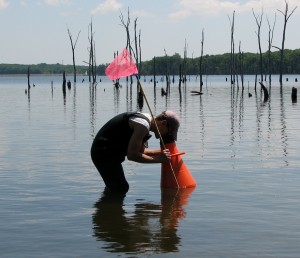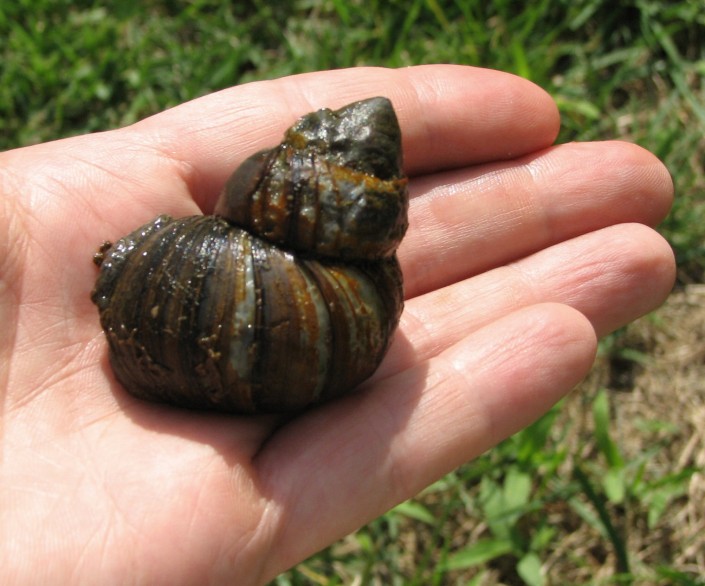Freshwater Invertebrate Surveys
SEARCHING FOR FRESHWATER MUSSELS & CRAYFISH AT MANASQUAN RESERVOIR
By Michael J. Davenport, Marine Species & GIS Programs Manager

New Jersey is home to at least 16 species of freshwater bivalves (freshwater mussels and clams), half of which are listed as endangered or threatened within the state. The presence of freshwater mussels within a water body is an indication of water quality so determining where they occur is important for protecting water resources within the state. In fact, the NJ DEP’s “Category One” (C1) designation for some state waterways is often based on the presence of some freshwater mussel species. C1 waters are protected from any measurable change in water quality because of their exceptional ecological significance, exceptional recreational significance, exceptional water supply significance, or exceptional fisheries resources.
Last week, I accompanied the Endangered and Nongame Species Program’s freshwater mussel biologist, Jeanette Bowers-Altman, and another survey team member to conduct a preliminary survey of the Manasquan Reservoir in Monmouth County for both freshwater mussels and crayfish. I had visited the reservoir several times before and had confirmed the presence of at least three bivalves: the Asian clam, eastern floater, and paper pondshell. Of those three species, only the eastern floater is native to New Jersey.
We surveyed several areas around the perimeter of the reservoir. We took readings of the water’s temperature, pH, and dissolved oxygen as well as documenting the substrate type and GPS coodinates. Unfortunately for our survey efforts, the water level was higher than ideal for locating mussels and the only species which we found was the paper pondshell. However, the clarity of the water and the nature of the substrate indicate that future efforts, when the water level is lower, may be more productive.

One interesting find was a rather large (~2.5 inches) freshwater snail which I have never encountered previously. Thanks the ID skills of Jay Cordeiro at the University of Massachusetts – Boston, the snail has been identified as the Chinese mystery snail (Cipangopaludina chinensis), a non-native species introduced to the U.S. via San Francisco in the late 1800’s. It has since spread into at least 37 U.S. states and 4 Canadian provinces and was first documented in New Jersey in 1926. According to Jay, the species has been “implicated in vegetation decline, competition with native species, and are hosts for certain parasites. Current populations are spread through the aquarium trade or on ornamental aquatic plants.”
For more information regarding New Jersey’s rare mussel species, please visit CWF’s on-line field guide at: http://www.conservewildlifenj.org/species/fieldguide/
Discover more from Conserve Wildlife Foundation of NJ
Subscribe to get the latest posts sent to your email.